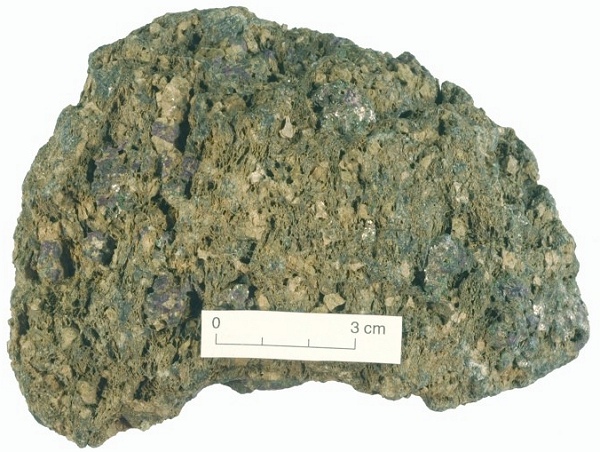
![]() Peridotite
xenolith from kimberlite; Kimberley, South Africa
Peridotite
xenolith from kimberlite; Kimberley, South Africa
This is a view of the weathered surface of a lump of
peridotite, found in the diamond-bearing volcanic rock
kimberlite. It is a xenolith (literally, a foreign rock)
broken off at depth and brought up to the surface in the
volcanic magma. In fact, it has been brought all the way
from the Earth's mantle, 150 kilometres or more below the
surface. This peridotite consists of the minerals olivine
(now broken down to form the sample's honeycombed weathered
crust), pyroxene (pale blocky crystals) and garnet (dark
purplish large crystals). Peridotite is the rock of which
much of the Earth's mantle is made. Although peridotites are
usually grouped with the igneous rocks, mantle peridotite
should really be considered as a metamorphic rock, because
it did not form by crystallization from a magma, but
crystallized and re-crystallized in the solid state at depth
in the Earth.